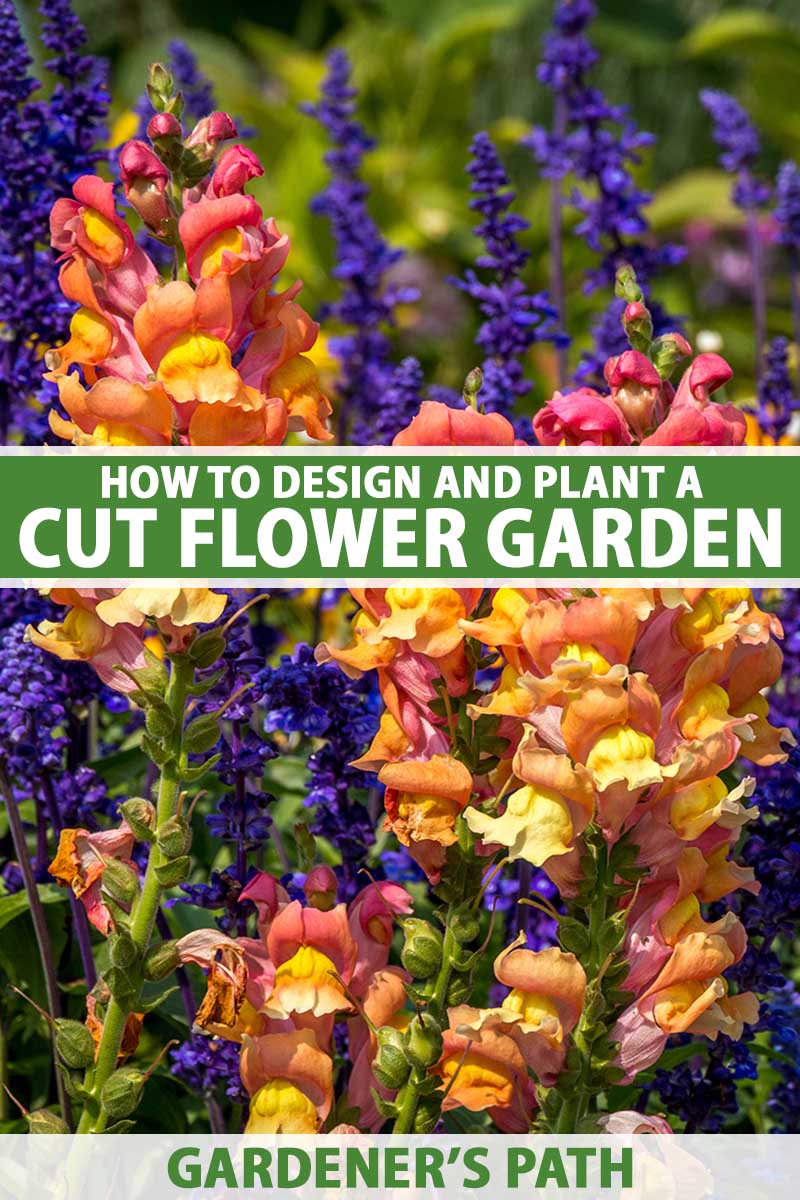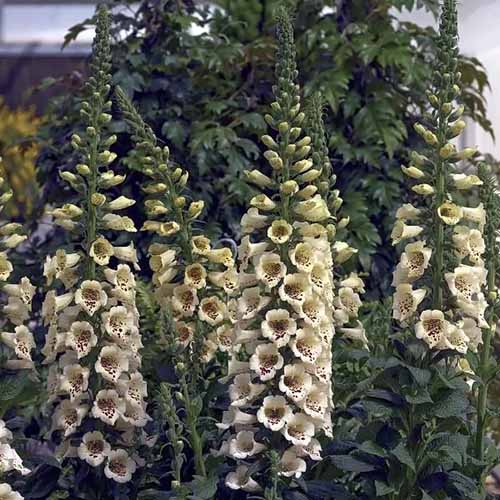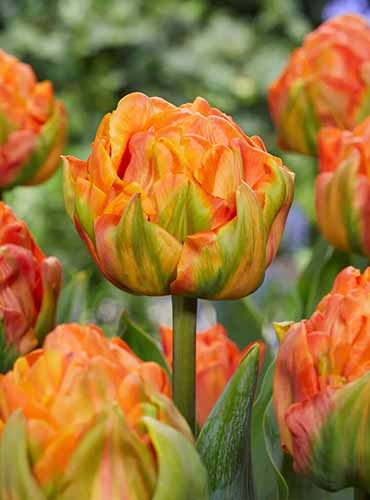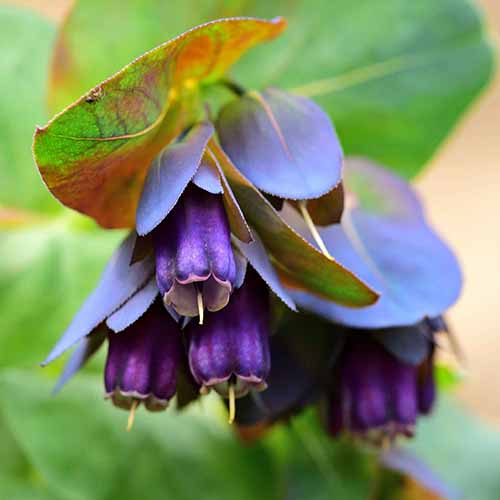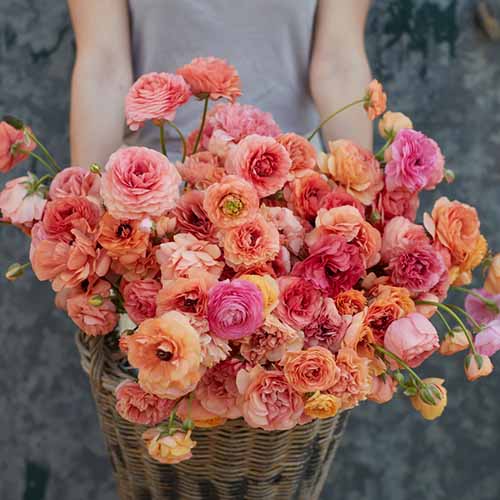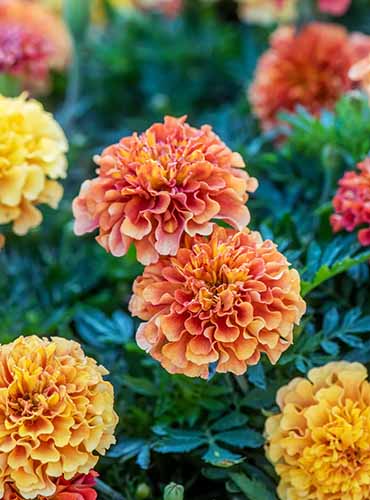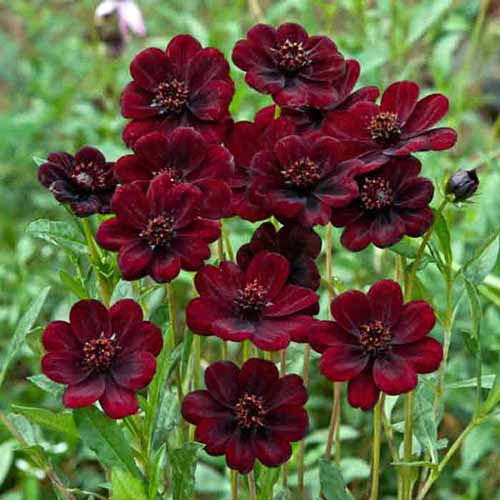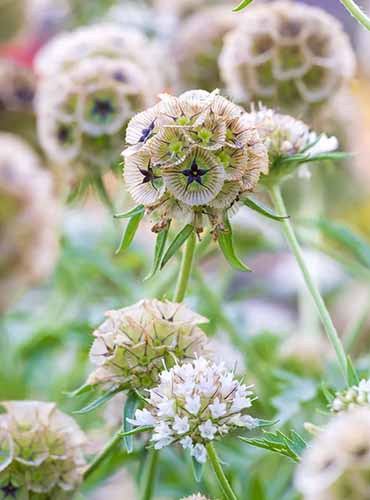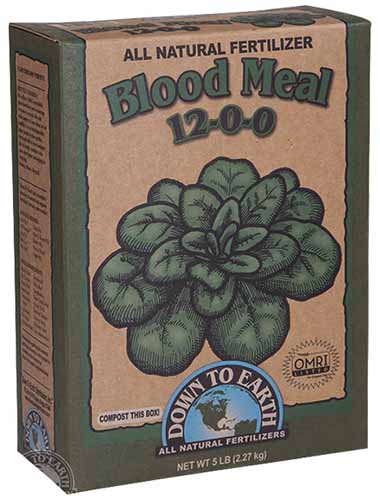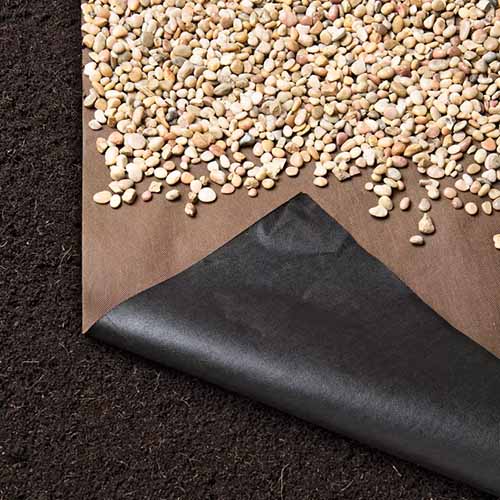Having fresh flowers on my kitchen table and nightstand isn’t an indulgence for me, it’s a necessity. Even if it’s just a little posy of dandelions, chicory, and some burdock leaves, enjoying a little nature inside my home makes my day.
I’ve taken my little cut flower hobby from bedside wildflowers to creating elegant arrangements for friends’ weddings.
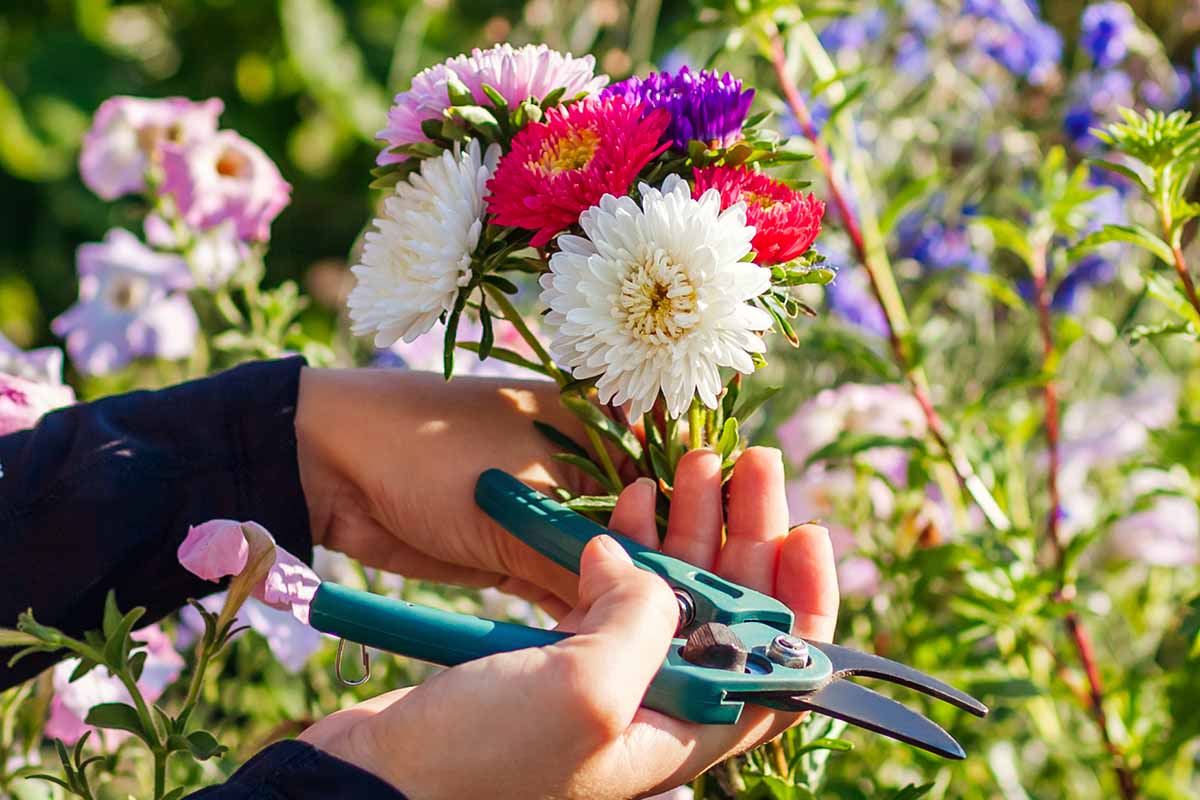
We link to vendors to help you find relevant products. If you buy from one of our links, we may earn a commission.
Like many hobbies, it has taken on a life of its own, and has expanded from a few flowers for cutting in my mixed beds to an entire dedicated cut flower garden full of dahlias, roses, and gomphrena.
I’m guessing that since you’re reading this guide, you have a similar passion for cut flowers.
You don’t need a huge area to have enough options to decorate your house.
With some vertical growing, a little succession planting, and the right species, you can squeeze quite a few flowers into a small area.
Or you can embrace the hobby and go all in with a huge area so you can grow flowers to your heart’s content.
Here’s what we’re going to chat about in the coming guide:
How to Start a Cutting Garden
You don’t need a single dedicated spot to grow flowers for cutting. You could have a big dahlia plant next to a camellia or a Japanese maple; or a vegetable garden with a border of baby’s breath plus some yarrow and sweet peas sprinkled into the mix.
In this guide, we are going to focus on a dedicated cut flower garden rather than talking about a mixed bed.
A dedicated cutting garden allows you to plan carefully and provide the unique care that cut flower species need.

There’s one other point we need to clarify before we get into the details. A “cut flower” is a bloom grown for the purpose of removing it from the plant to use in arrangements.
These typically have long stems and large blossoms, but not always. A posy, for instance, might include something like statice (Limonium sinuatum), which are tiny.
Certain species work better as cut flowers, while others require you to choose a specific cultivar. For example, a Knock Out rose doesn’t make a good cut flower, but a hybrid tea like ‘Princess Charlene de Monaco’ is perfection.
Before we can start the fun part of picking flowers, we need to figure out what we’re working with.
Define the Area
Before you can start choosing flowers and planting, you need to figure out what your growing area looks like.
First define the area where you want to situate your cut flower garden. You want a spot with as much sunshine as you can manage. Very few flowers do well in anything less than full sun.
Once you have identified a suitable location, demarcate the edges of the bed or area.
You can do this with string or even a hose, whatever works to help you see the specific section you’ll be working with. Then watch it over the course of a day or two to see exactly how much sun the area receives.
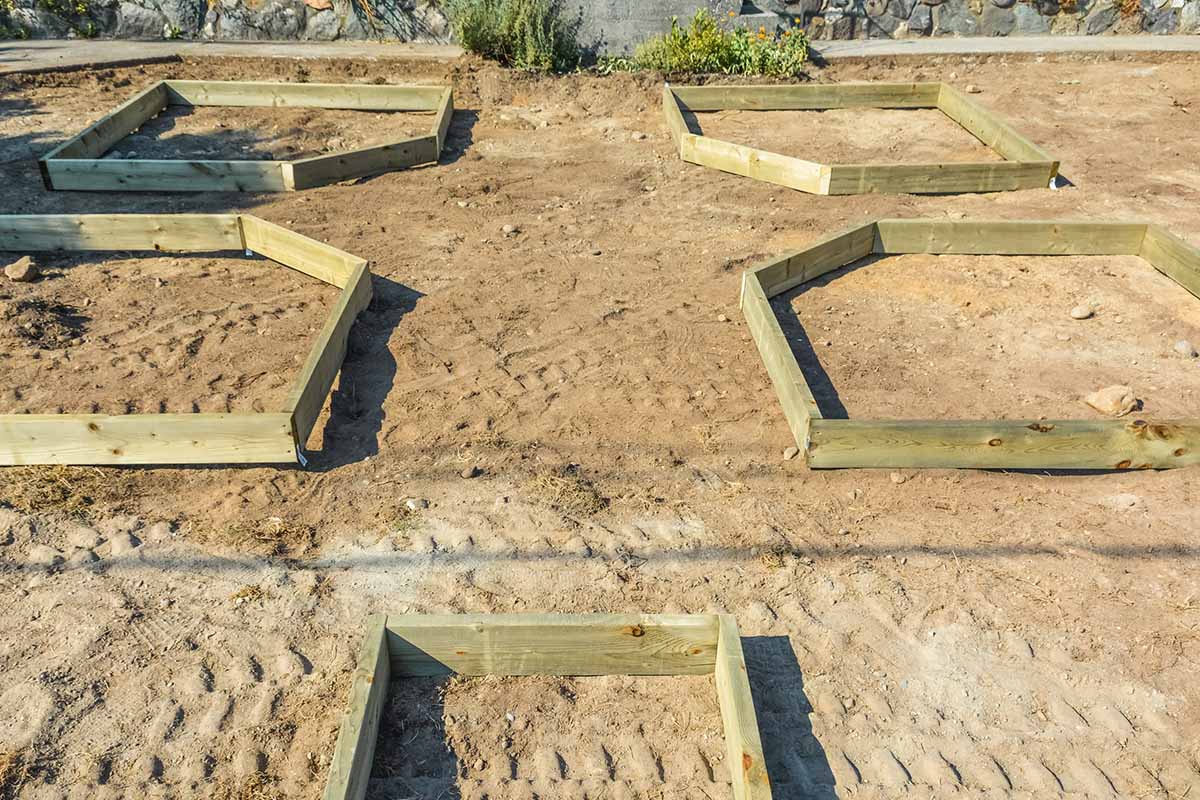
Sometimes we think a spot is in full sun, only to discover that it’s shaded by a tall tree for several hours of the day.
Check hourly over the course of a day to make sure that it’s in the sun. Once you’re sure the area you have selected receives enough light, you can decide how you want to fill the space.
Since you’ll be going in and removing blossoms frequently, it’s best to plant in narrow beds that are easily accessible. If you have a 20-foot by 20-foot area, you might want to divide it into five four-feet-wide sections, so you’re never reaching more than two feet to grab a flower.
Now for the fun part – deciding which plants you want to grow and how many of each.
Choosing Flowers
Before you pick the exact cultivar you want, it helps to narrow down the broad categories. Flowers can be tender or hardy annuals, biennials, or perennials.
- Do you want to grow new species each year? Go with annuals.
- Do you want plants that will flower all summer long? Annuals, again.
- Prefer plants that will return on their own each year? Choose perennials.
Then, decide if you want mainly “cut and come again” types, which means you can take a flower or stem, and the plant will produce a new one to replace it in the same growing season – like marigolds.
Or do you want something that is big and showy but only produces once, like sunflowers?
After you figure all that out, the most important factor is to narrow down the species that will grow in your Zone.
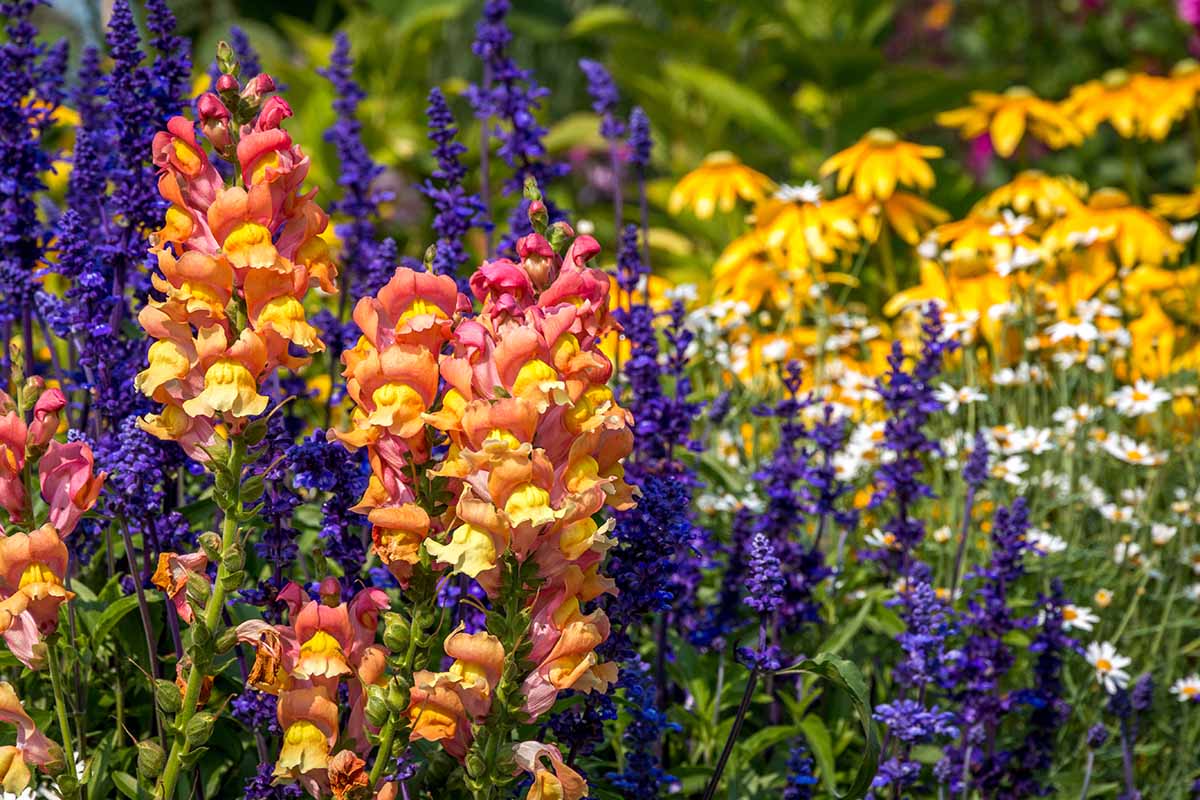
Think about what kind of shapes and colors you want in your arrangements. There’s no point in growing bright pink ranunculus if you hate pink and you prefer minimalist shapes.
Arrangements typically have focal flowers and some filler flowers or foliage.
You might also include species like snapdragons (Antirrhinum), salvia (Salvia), or celosia (Celosia) for height, in addition to fillers and focal flowers.
Also consider the time of year when your chosen plants will bloom. If you have dreams of a bouquet combining daffodils and sunflowers, you’re going to be in trouble because they bloom at very different times of year.
As you’re deciding what species you’d like to grow, consider your space and whether you want to add vines, shrubs, herbaceous plants, or flowering trees.
If you have a small space, climbing vines, narrow shrubs, or herbaceous species might work best. If you have a very large space, the addition of a flowering tree could be awesome and provide lots of material to work with.
You’ll have to do some math, here. If a plant needs one square foot of space, then you will need ten square feet for ten plants.
If you intend to do some succession planting, you can double up on space. Some spring-blooming poppies could be replaced with fall mums after they fade, for example.
Here are some excellent cut flower options to try:
Species to Select
Any flowering plant that you want to include in a bouquet is the perfect plant for your cut flower garden. If you want something unexpected like vinca, go for it. If you want a posy of dandelions and chicory, you do you.
There’s no reason to choose the more common cut flower species if you don’t want to except for convention.
But having said that, common species are beloved for good reasons – they tend to last for an extended period in the vase, produce long stems, and have showy flowers or leaves.
If you like the Victorian cottage garden look, anemone (Anemone spp.), delphinium (Delphinium spp.), hydrangea (Hydrangea spp.), geranium (Geranium spp.), lilac (Syringa spp.), pincushion (Scabiosa japonica), and sweet pea (Lathyrus odoratus) are all perfect choices.
If you want add a little height to your arrangements, species with tall flower spikes like gladiolus (Gladiolus spp.), mignonette (Reseda odorata), snapdragon, and speedwell (Veronica) will fit the bill.

Some of the classic species you’ll find in flower shops are dahlia (Dahlia spp.), dianthus (Dianthus spp.), lily (Lilium spp.), peony (Paeonia spp.), poppy (subfamily Papaveroideae), rose (Rosa spp.), stock (Matthiola spp.), sunflower (Helianthus), and zinnia (Zinnia spp.).
I’m a fan of wildflowers, so I keep California poppy (Eschscholzia californica), cornflower (Centaurea cyanus), cosmos (Cosmos spp.), farewell to spring (Clarkia amoena), and yarrow (Achillea millefolium) in my cut flower garden.
And don’t forget the fillers! Common options include baby’s breath (Gypsophila), bells of Ireland (Moluccella laevis), dusty miller (Jacobaea maritima), eucalyptus (Eucalyptus spp.), feverfew (Tanacetum parthenium), laurel (Laurus nobilis), and sedum (Sedum spp.).
Finally, don’t be afraid to think outside the box. I’ve taken branches off my Japanese maples (Acer spp.), snipped long sprigs of rosemary (Salvia rosmarinus), and even harvested Queen Anne’s lace (Daucus carota) from roadsides for my arrangements.
Spring Bloomers
Spring is known for its showy flowers. Consider biennials like Canterbury bells (Campanula medium), foxglove (Digitalis spp.), money plant (Lunaria annua), dame’s rocket (Hesperis matronalis), and sweet William (Dianthus barbatus).
One of my favorites is the foxglove cultivar D. purpurea ‘Camelot Cream.’
The spotted peachy-colored flowers pair well with almost everything, whether you want a peaceful white, cream, and peach arrangement or a bright pink, purple, and cream display.
Happy in Zones 4 to 11, you can find ‘Camelot Cream’ available from Nature Hills Nursery.
Spring bulbs are a classic option. Anemone (Anemone spp.), daffodil (Narcissus), grape hyacinth (Muscari), hyacinth (Hyacinthus), iris (Iris spp.), and tulip (Tulipa) are all easy to care for and provide beautiful flowers in a variety of colors and shapes.
Big, full, double tulips like ‘Lorenzo’ can make a stunning display all on their own and look gorgeous when paired with species like lilacs and ranunculus.
Pick up bulbs at Burpee for growing in Zones 3 to 8.
Long-flowering annuals like bells of Ireland, dianthus, honeywort (Cerinthe spp.), larkspur, love-in-a-mist (Nigella damascena), orach (Atriplex hortensis), and some snapdragons will provide ongoing color.
I adore honeywort. It’s not as well known as some popular species but it’s one of my favorites for cutting.
This year, I snipped them for over a month during the summer and then pulled the plants after they went to seed. I also used the edible blooms in cocktails and salads.
The seeds that had fallen from the plants started a second round without any help from me, and I had plenty of foliage to fill fall bouquets.
Even as the frost has killed back some of the more tender species in my cutting garden, honeywort is still out there going strong.
If you’d like to try purple honeywort in your Zone 7 to 11 garden, you can find seeds available in a variety of packet sizes at Eden Brothers.
If you want, let the seeds fall and you, too, can have a second round in the fall.
Peony, penstemon (Penstemon spp.), ranunculus (Ranunculus spp.), and speedwell are some fantastic perennial choices. Poppies can be annuals or perennials.
I grew ‘Champagne’ ranunculus this year in my cut flower garden, and they drew compliments from everyone who saw the large, fragrant blossoms in hues of butterscotch, coral, honey, peach, and pink.
Eden Brothers carries ‘Champagne’ seeds in 20, 40, or 100 quantities. They grow well in Zones 8 to 11.
Don’t forget the flowering trees and shrubs, if you have space.
Not only can you force the branches early for some winter color, but trees make a large statement for little work.
Crabapple (Malus), flowering cherry (Prunus), hawthorn (Crataegus), lilac, redbud (Cercis), and viburnum (Viburnum spp.) are all stunning choices.
Summer Bloomers
By summer, some of the showiest plants are coming into their full glory. Dahlia, lily, delphinium, phlox, rose, snapdragon, and yarrow are all looking their best.
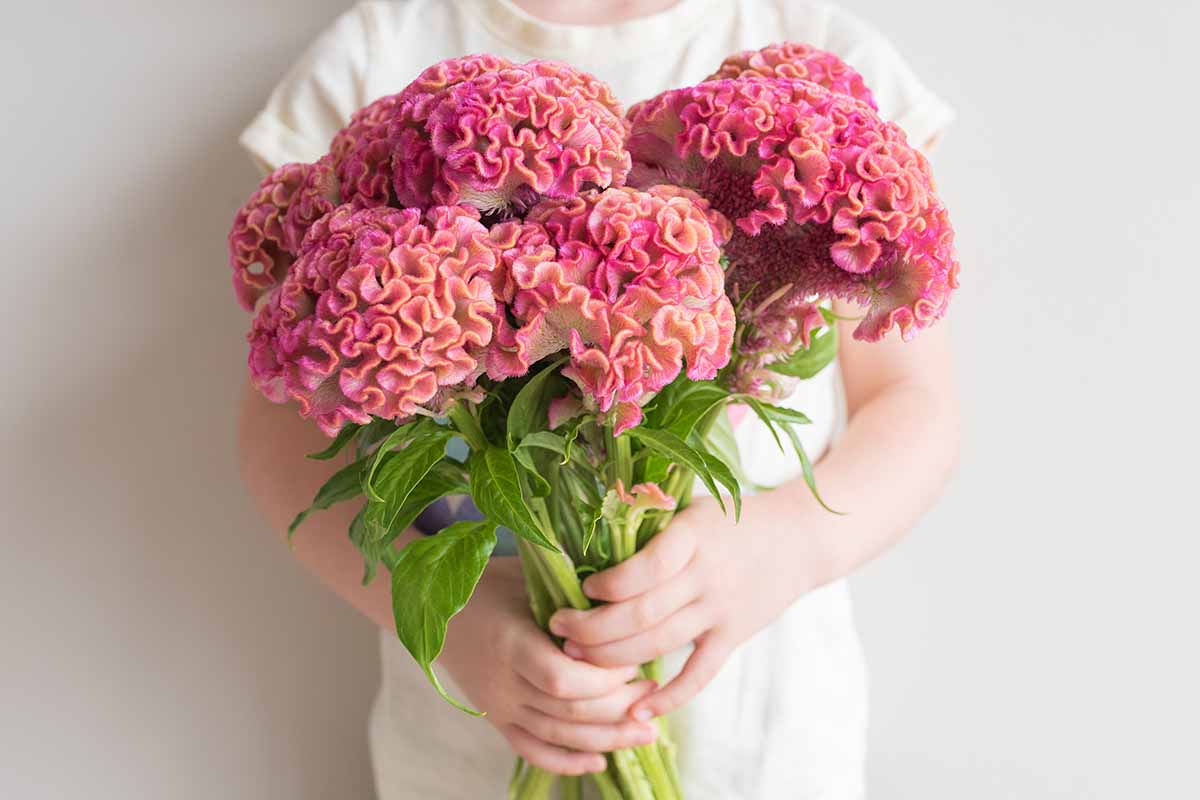
Annuals like celosia, cosmos, globe amaranth (Gomphrena), marigold (Tagetes), and zinnia are also looking incredible.
There’s nothing wrong with a classic French marigold (T. patula), but some of the newer cultivars are available in unusual colors and the large flowers make for striking cut options.
‘Strawberry Blonde,’ for example, produces beautiful pastel pink, salmon, rose, and yellow blooms.
‘Strawberry Blonde’ French Marigold
Bring home 50 seeds or 12 live plants from Burpee.
Geraniums, both scented and garden, are double-duty options, providing foliage and flowers for your arrangements. Both are perennials, but most people grow them as annuals.
Cosmos are the cut flower workhorse. They bloom repeatedly, and each plant produces an abundance of flowers.
Available in a large variety of colors, from nearly black to perfectly white, they grow quickly from seed and will even self-sow if you let them.
I like to use ‘Chocolate’ as a dark focal point among lighter flowers. If you’d like to do the same, purchase two, four, or ten bulbs from Eden Brothers.
For a bit of greenery, cut branches from aspen (Populus tremuloides), beech (Fagus), ninebark (Physocarpus), or any other tree you like.
The foliage tends to look its greenest and fullest during the summer, so deciduous tree branches make a marvelous backdrop to highlight summer bloomers.
Fall Bloomers
Rudbeckia, also known as black-eyed Susans, and other flowering perennials like aster (Aster spp.), Chinese lantern (Physalis alkekengi), Japanese anemone (Eriocapitella hupehensis), sedum, and ornamental kale (Brassica oleracea var. acephala) are starting to draw all the attention in the cutting garden come autumn.
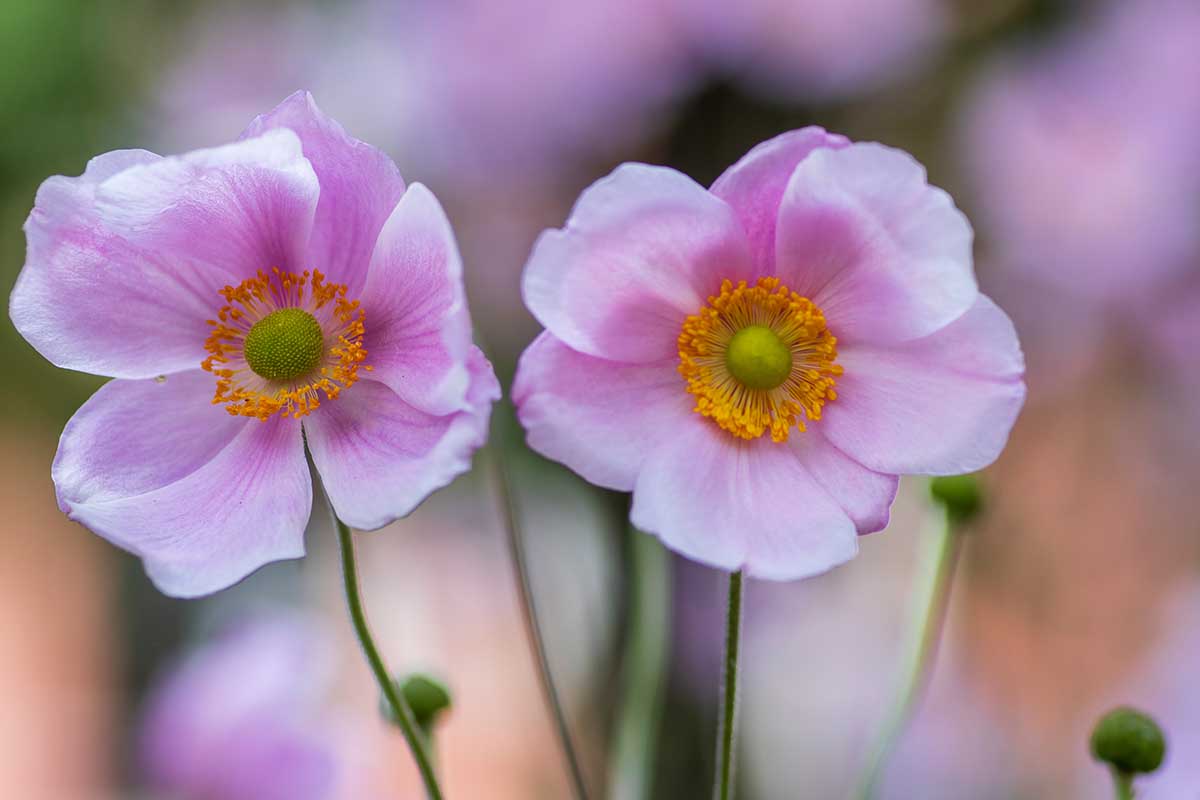
Chrysanthemums (Chrysanthemum spp.) and sunflowers are the stars of the show.
Fall is the time when seed pods can take centerstage.
Amaranth (Amaranthus spp.), cress (Lepidium sativum), flax (Linum usitatissimum), millet, and scabiosa (Scabiosa spp.) can all add something special to your arrangements.
The white flowers of Scabiosa ‘Paper Moon’ give way to cream seed heads with maroon stripes that, unlike live flowers, will last for weeks in an arrangement. Grab 50 seeds at Burpee.
For other interest, consider bittersweet (Solanum dulcamara), grapevines (Vitis), hypericum (Hypericum spp.), rose hips, and snowberry (Symphoricarpos).
Winter Bloomers
Don’t forget winter. Many people give up on creating arrangements in the winter, but just because your main cutting garden is sleeping, you still have options.
In addition to the traditional gathering of evergreen branches, there are more winter flowering species than you might realize.
Beautyberry (Callicarpa), camellia (Camellia spp.), hellebore (Helleborus), Japanese andromeda (Pieris japonica), and privet (Ligustrum) all provide color in the winter.
I use my camellias as a privacy fence on the north side of my cutting bed and I cut the blossoms throughout winter to use in arrangements with a background of privet and long sprigs of beautyberries.
If you’ve never used hellebores in an arrangement, you’re missing out. The short stems make them perfect for lining the center of a table without making it impossible to converse over them with your dinner guests.
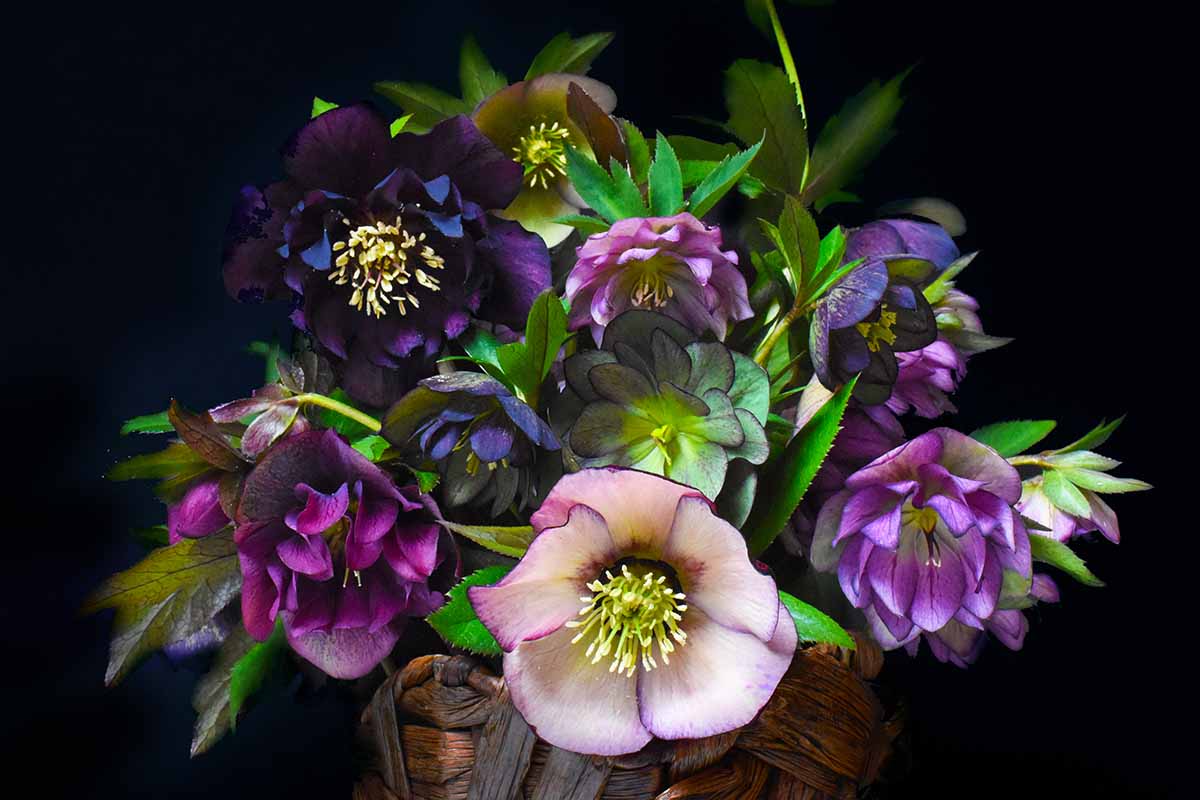
You can also raise amaryllis (Hippeastrum) and paperwhite (Narcissus papyraceus) indoors.
Force branches from spring blooming trees like quince (Cydonia), Prunus species, forsythia (Forsythia spp.), and willow (Salix) for some winter color and texture.
Evergreens like yew (Taxus), boxwood (Buxus), eucalyptus, holly (Ilex), juniper (Juniperus), and Oregon grape (Berberis) are a staple of winter arrangements to highlight the flowers you use.
American beautyberry is one of my favorites to include in my winter flower arrangements.
The shrubs couldn’t be easier to grow, but those berries would be worth it even if it were a challenge. The clusters of glossy purple fruits seem to glow from within.
Hardy in Zones 6 to 10, three- to four-feet-tall American beautyberry shrubs are available at Fast Growing Trees.
Prepare the Area
Preparing the bed in the spring or fall before you plant will set you up for success.
First, test your soil. You need to know the pH of your soil and whether it’s deficient in any major nutrients, so you can amend accordingly.
If your test shows that your soil is lacking nitrogen, which is a common problem in some areas, then I’d recommend adding some blood meal.
I recommend Down to Earth, which makes their products from natural, organic supplies and packages them in biodegradable boxes.
You can find blood meal available at Arbico Organics.
If you have clay earth, work in a lot of well-rotted compost to loosen it up and enrich the soil. If you have sandy soil, do the same.
Well-rotted compost is your friend. In fact, even if you have the holy grail of loamy, well-draining soil, it can’t hurt to work in a little well-rotted compost.
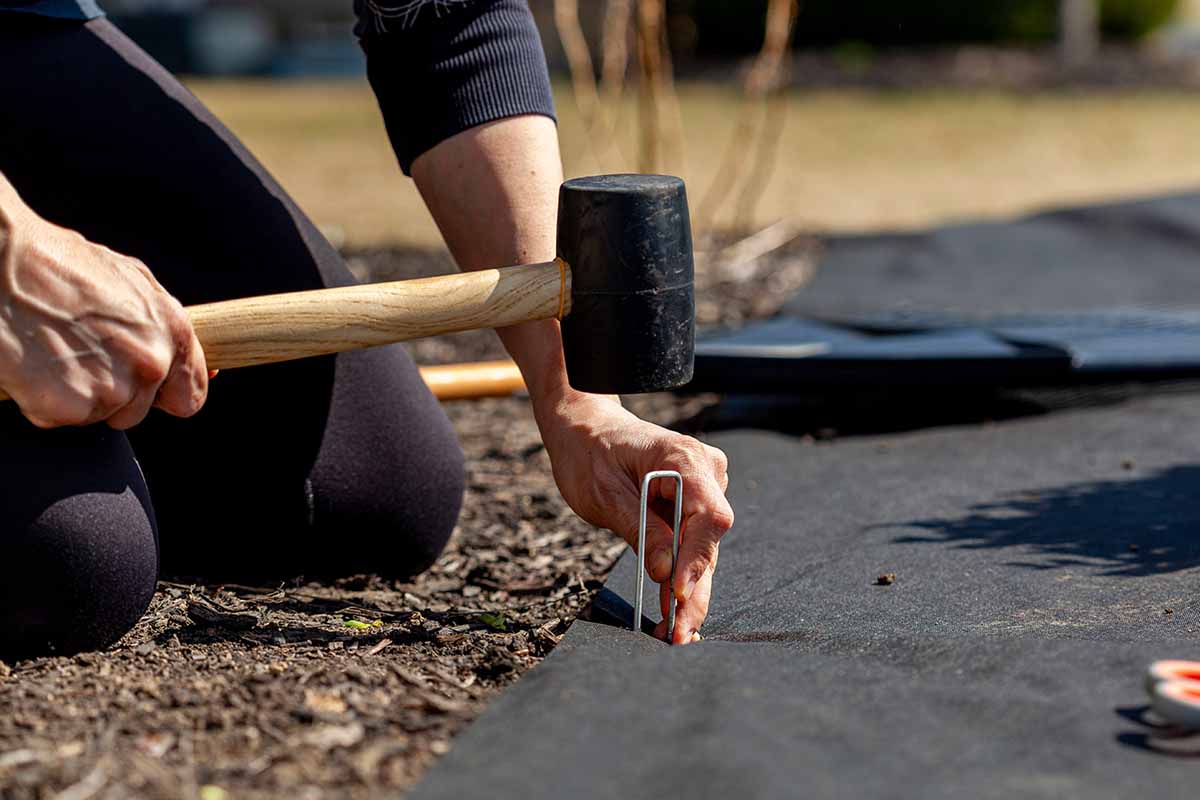
If you intend to use landscaping fabric to suppress weeds or raise the soil temperature prior to planting, now is the time to set it in place.
I only know a few people who look forward to spending their Saturdays weeding their garden beds.
Plus, weeds can spread disease and compete for water and nutrients, stunting the growth of your plants.
Pick up a four-by-50-foot piece of Weed Barrier Pro mat at Gardener’s Supply Company. You’ll spend a lot less time worrying about the number of weeds in your cutting garden, I promise.
With everything prepped and ready to go, it’s time to put your plants in the ground. Timing depends on the species.
Some bulbs and shrubs are best planted in the fall, others should be started indoors during winter, or put out in the spring.
Plant your daffodils and tulips in the fall, as well as most shrubs.
Your tender perennials and annuals like dahlias, marigolds, bachelor’s buttons, dianthus, and gladiolus should go out in spring. Be sure to check the requirements of each species you decide to grow.
Once you’ve set your plants in the ground, the work isn’t done – you still need to maintain them.
Maintenance
Each season comes with its own tasks in the cutting garden.
Spring
Spring is always a busy time. You should prep the garden area as soon as you can work the soil.
That includes weeding, testing the soil and amending it according to the results, and topping with mulch if you use it.

If applicable, divide tubers, bulbs, and rhizomes of plants like irises and dahlias.
Put supports like trellises and stakes in place in advance of planting to avoid disturbance to the roots.
Sow seeds and transplant seedlings of species that should be planted in the spring. Fertilize species that require it.
While choosing the right plants is the biggest factor in the length and availability of blooms, there is a bit more you can do to extend the season.
The first is to stagger, stagger, stagger. For any annuals, succession plant your flowers.
Perennials will bloom when they bloom, but you can deadhead and add a bit of fertilizer to encourage more flowers.
Summer
Summer is the time when most of the prep is over, and you can focus on keeping the ship sailing smoothly.

Your biggest job is going to monitor the water situation. As the heat rises, the soil dries out faster.
You should also be staking or otherwise supporting any plants that tend to get top-heavy.
As things really take off, you may need to pinch some plants to encourage dense growth, prune those that require it, and deadhead plants as the flowers fade if you don’t cut them.
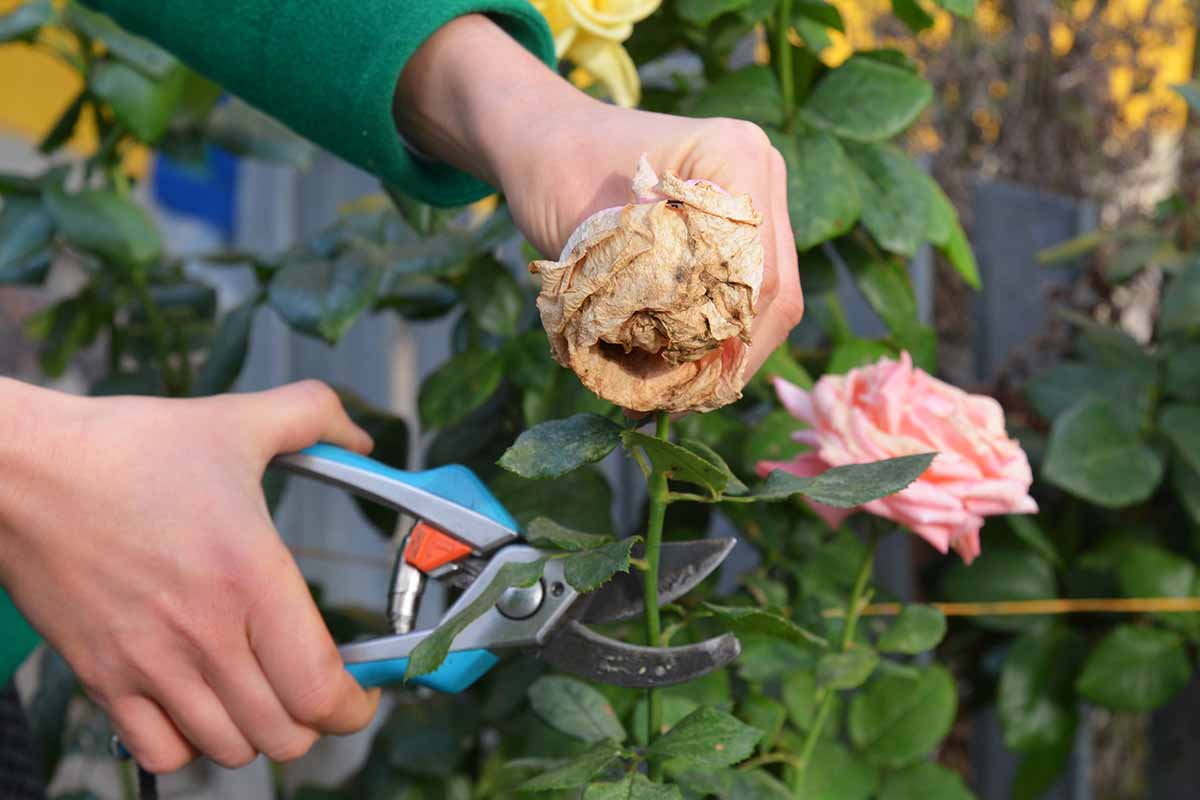
Keep on top of weeds, and watch for pests and disease. Add fertilizer for plants that require feeding during the summer.
Finally, start your planning and get shopping for those fall and winter species.
Fall
The veggie garden might be explosively productive, but the cut flower garden tends to be winding down in fall.

Clean up your beds, dig up dahlias if you live in a cold region, and get ready to overwinter your tender perennials. Do a last application of fertilizer before the cold weather sets in.
Now is the time to sow seeds and plant bulbs that need to go in the ground before winter.
You should also prune your perennial shrubs and trees, and test and amend soil once again.
Winter
Winter is the time to take a break and slow down a bit.
It’s not all kicking your legs up and reading by the fire, though. Clean your tools and equipment and sharpen any that require it.
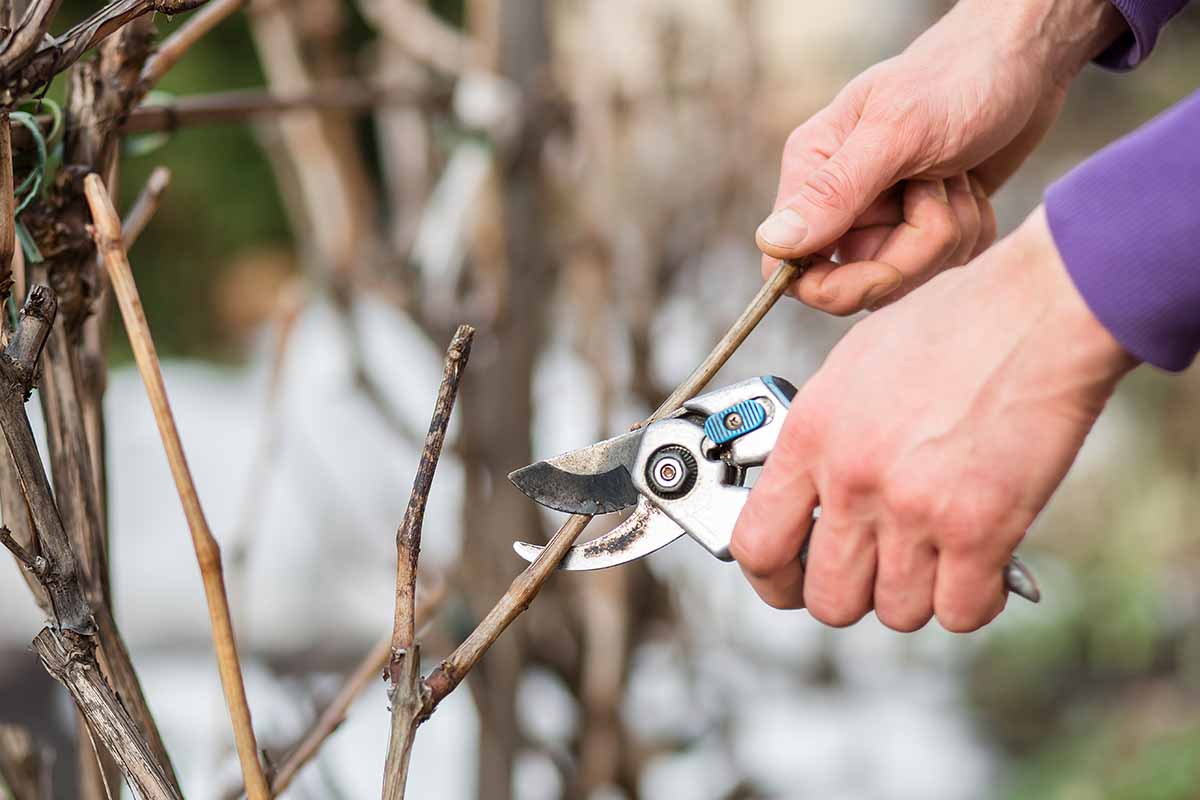
You might also need to prune a few shrubs and trees to prevent them from shading your flower garden.
Sit down with a cup of tea and plan next year’s cutting garden. Think about what went well this year, what didn’t, and if there are new flowers you’d like to try. Then, order the seeds, tubers, bulbs, and bare roots.
Towards the end of the season, start seeds indoors for those plants that need a long growing season.
Enjoy the Floral Bounty
Whether you are piling every horizontal surface in your home with vases full of flowers or enjoying a single hellebore blossom in a bud vase in the dead of winter, a cut flower garden pays huge dividends by dressing up the home and boosting your mood.
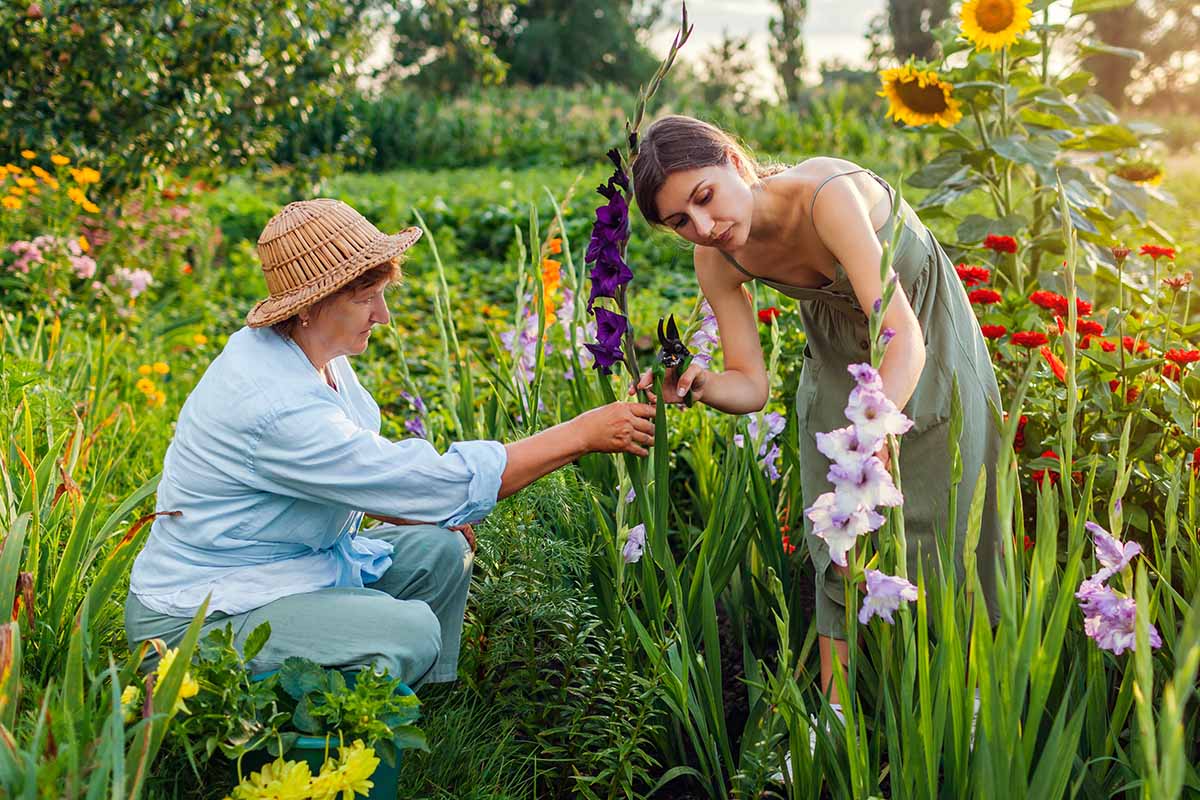
What species are you considering? How will you arrange them? Share your big plans in the comments section below.
And for more garden design inspiration, check out these guides next:
